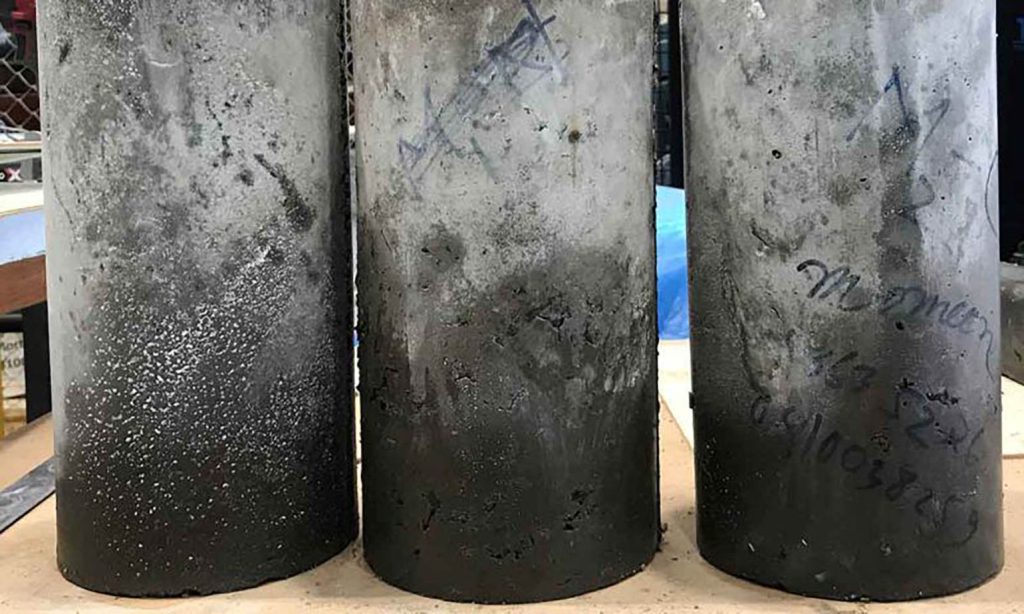Australian engineers have replaced conventional aggregates in concrete with rubber from discarded tyres.
In the past, efforts to replace traditional aggregates, such as gravel and crushed rock, have produced weak concretes that failed to meet building standards.
Now, a team of engineers from RMIT University have published a study in the Resources, Conservation & Recycling journal to show that their manufacturing process for structural lightweight concrete is the real deal.
Lead author and PhD researcher from RMIT University’s School of Engineering, Mohammad Momeen Ul Islam, told create that the new greener and lighter concrete will reduce manufacturing and transportation costs significantly.
“Our research team had already investigated the use of old tyres and building rubble to make sustainable roads,” he said.
“We have worked on a technique that allows us to minimise the limitation of rubber aggregates in concrete to implement for structural elements by the complete replacement of traditional coarse aggregates with discarded or waste vehicle tyres.”
The RMIT technique involves using newly designed casting moulds to compress the coarse rubber aggregate in fresh concrete that enhances the building material’s performance.
Islam said their findings debunked a popular theory on what could be achieved with recycled rubber particles in concrete.
“It has always been challenging to incorporate rubber aggregates in concrete for the structural application,” he said.
“Particularly when we are talking about replacing conventional coarse aggregates completely with waste rubber particles in concrete.”
Concrete savings
The researchers’ published study showed that the carbon emissions of the novel structural lightweight concrete is reduced by around 16 percent compared to traditional concrete.
“As we are replacing traditional coarse aggregates entirely with discarded waste tyre rubbers, the cost can be reduced compared to conventional concrete,” Islam said.
“Moreover, the management of discarded tyres causes environmental and economic issues when dumped for landfilling, burning, or stockpiling.”
There are also advantages when it comes to the bottom line.
“Utilising this enormous amount of waste in sustainable concrete could address these issues with a scientific and more advanced approach,” Islam said.
“As it is structurally lightweight precast concrete, the cost related to transportation, materials, and labour can be saved. Additionally, the construction time can also be reduced compared to traditional concrete.”
In terms of weight and density, the RMIT product is between 20 to 35 percent lighter than conventional concrete.
“The density of the newly developed concrete varies from 1650 kg/m3 to 2000 kg/m3, which can be denoted as lightweight concrete according to the standard codes ACI 213R-14 (2014) and Eurocode 2 (2004),” Islam said.
Coming to a road near you
The researchers can now demonstrate that their precise casting method is overcoming the decades-old perceived limitations on using large amounts of coarse rubber particles.
“Every technique has its own limitation — and finding the limitation makes it much easier to go for implementation,” Islam said.
“However, this technique is recently developed, and our team is working hard to find its long-term response during the serviceability periods.
“Our future plan is to make this technique available to the construction industry by introducing precise and simple methods to implement in the existing facilities.
“The main purpose is to deliver it with simple reach so that the relevant bodies can get the inspiration to use it to a vast extent.”
RMIT has filed several national phase patent applications to protect its technological breakthrough.
“We have met the requirements of standard codes as structural lightweight grade concrete for the developed concrete,” Islam said.
“We are currently working on implementing this technique in structural elements and trying to find its response in the long term. We believe this concrete can be implemented in the construction industry within the next few years.”
Islam explained that there is already a circular economy in place for recycled tyres that manufacturers should be able to tap into.
“Third parties in Australia are already handling discarded tyres for different purposes,” he said.
As the RMIT technique applies precast concrete, the handling can also be performed by manufacturers on a large scale.
“The precast industry can easily adopt this technique with simple modifications to their existing facilities. This will significantly benefit the construction industries, especially housing projects, builders, concrete suppliers, and precast concrete industries,” Islam said.
“Ultimately, this will deliver benefits to the general people. As we are talking about reducing construction costs, it may one day be reflected in housing prices.”
For more of the latest engineering news sign up to create’s weekly newsletter.
